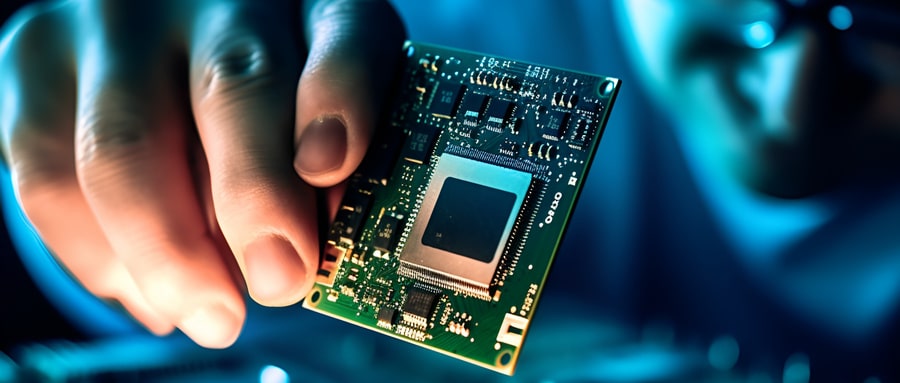Understanding Turnkey PCB Assembly: A Revolution In Electronics Production
PCBs have become an essential component of nearly all electronic devices. With technology evolving and production methods becoming more efficient, including Turnkey PCB Assembly. This article seeks to explore its process, advantages, and critical aspects, offering a thorough understanding of this innovative manufacturing method.
Turnkey PCB Assembly is an all-inclusive approach to electronics production that allows manufacturers to hand off the entire process – from production, testing, assembly and packaging – to one service provider. In essence, Turnkey PCB Assembly transforms fragmented traditional production into an organized, efficient method.
Turnkey PCB Assembly offers many advantages, with convenience being at its forefront. By having one service provider oversee the entire process from initial PCB design through final assembly, there’s no need to coordinate between multiple vendors – this significantly simplifies things while eliminating miscommunication errors that might otherwise arise due to miscommunication between different parties involved.
Quality control is of utmost importance in electronics manufacturing. By consolidating all operational aspects in one location, monitoring and quality checks become more efficient, helping ensure all electronics components meet industry-high standards.
Turnkey PCB Assembly also can reduce production times significantly by eliminating the need to transport components between different service providers – this process becomes faster and more efficient, meaning products reach market more quickly for increased competitive advantage.
To fully comprehend Turnkey PCB Assembly, one must understand its process. This starts with PCB design and acquisition by the Turnkey provider of all necessary components, then layout transfers onto board materials before being etched to remove extra copper and printed solder mask for protection of the board. Following assembly onto board comes visual inspection, automated optical inspection (AOI), functional testing as well as packaging and shipping the finished boards.
Turnkey PCB assembly serves a multitude of uses across industries and applications, from prototyping to production for consumer electronics, medical devices, automotive and telecommunications manufacturers.

Turnkey PCB Assembly revolutionizes PCB manufacturing by offering a simple, efficient and tightly managed assembly process. With faster time-to-market and higher quality products in mind, Turnkey PCB Assembly could prove invaluable for electronics manufacturers looking to remain competitive by speeding up time-to-market and cutting lead times.
Join us as we present the ultimate guide to understanding and using Turnkey PCB Assembly. Discover how this cutting-edge method can simplify and streamline electronics manufacturing for maximum success, providing a straightforward, controlled process with minimum risk and hassle.
Turnkey PCB Assembly FAQ:
- What is Turnkey Printed Circuit Board Assembly?
Turnkey Printed Circuit Board Assembly refers to a comprehensive service where a PCB manufacturer handles every aspect of the PCB production process, from design and prototyping to parts procurement, assembly, testing, and finally, delivery. Essentially, the customer provides the concept, and the manufacturer delivers the finished product. - What are the Advantages of Turnkey Printed Circuit Board Assembly?
The key benefits of Turnkey Printed Circuit Board Assembly include time saving, cost-effectiveness, reduced logistical challenges, and increased quality assurance. Having a single point of responsibility can also simplify communication and problem resolution. - How does Turnkey Printed Circuit Board Assembly work?
In Turnkey Printed Circuit Board Assembly, you provide the manufacturer with your design files and specifications. The manufacturer then handles sourcing of the components, manufactures the boards, assembles the components onto the boards, and then tests the finished products to ensure they function as intended. - What is included in a Turnkey Printed Circuit Board Assembly service?
Turnkey Printed Circuit Board Assembly typically includes services like PCB layout, parts procurement, PCB manufacturing, component assembly (SMT and Through-hole), quality control, testing, and final shipment. - Can I request changes during the Turnkey Printed Circuit Board Assembly process?
Yes, having open communication with your manufacturer allows you to request changes or adjustments during the process. However, making significant changes after the process has begun might result in additional costs and extended timelines. - What is the difference between Partial and Full Turnkey Printed Circuit Board Assembly?
In Full Turnkey Printed Circuit Board Assembly, the manufacturer controls the entire process from start to finish, while in Partial Turnkey, the customer supplies some of the components, and the manufacturer addresses only specific stages of the assembly process. - How does Turnkey Printed Circuit Board Assembly affect the Overall Cost?
While Turnkey Printed Circuit Board Assembly might appear more expensive initially, it often saves money in the long run. It reduces the administrative and logistical costs associated with managing multiple suppliers, and lowers the risk of costly mistakes or delays during assembly. - How do I Decide if Turnkey Printed Circuit Board Assembly is right for me?
If your project requires a fast production time, lacks dedicated resources to handle multiple aspects of production, or needs high-quality assurance, Turnkey Printed Circuit Board Assembly could be an optimal choice. - Who typically uses Turnkey PCB Assembly services?
Both small and large businesses across various industries like electronics, medical, automotive, telecommunications, utilize Turnkey PCB Assembly services. It’s particularly useful for companies without in-house PCB assembly capabilities or those seeking to speed up the production process. - How can I ensure Quality in Turnkey PCB Assembly?
Working with a reputable manufacturer who has a history of delivering high-quality products and who employs robust quality assurance processes can help ensure the quality of your assembly. Always ensure to inquire about a potential manufacturer’s testing and quality control procedures.























